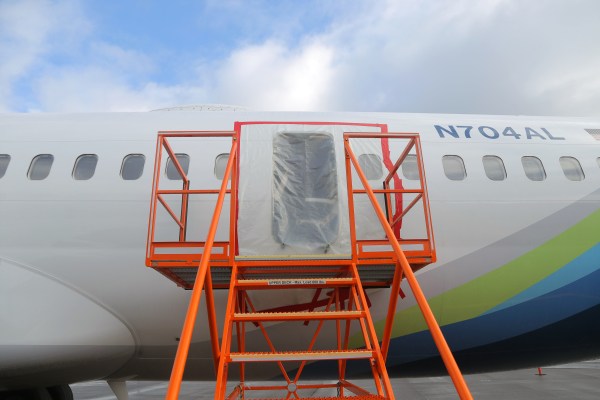Alaska Airlines Flight 1282: How could iPhones survive a 16,000-foot drop?
It’s ‘not super far fetched,’ experts say, ‘because impacts are complicated’

It is not common for airplanes to lose a door midair and yet land safely. That’s what happened to Alaska Airlines 1282, which landed in Portland, Oregon. But wonders never cease.
In a viral post, X user Seanathan Bates documented how he had found an iPhone on the side of the road that came from an Alaska Airlines passenger and had seemingly survived the 16,000-foot drop “perfectly intact.”
As Bates later added, there’s some nuance to how intact the device may have been, but “the screen didn’t have any damage.”
In an email to TechCrunch, the U.S. National Transportation Safety Board confirmed that it wasn’t just one device, but “two cell phones likely from the flight” that had been recovered and turned over to Alaska Airlines. The most striking detail is that “they were both functioning iPhones.”
How is it possible that a smartphone could survive such a massive fall, when there are people walking around with shattered screens from much smaller incidents? “Many readers reacted to Bates’s post by quipping that their phones had broken after falls of only a few feet,” the Guardian observed.
But while many of us are flabbergasted, experts aren’t.
“Impacts are complicated”
One of these experts is Rhett Allain, an associate professor of physics and blogger who also runs a YouTube channel, Dot Physics. Here’s the first half of his explanation:
It’s possible your phone could break if you drop it from 3 feet but not from 1,000 feet. Why? It’s because impacts are complicated. Suppose you drop your phone off the table and it lands on something hard. Since hard things don’t “give” during the collision, there will be a very short impact time. A short impact time would require a larger force to stop it. It’s this larger force that can make the phone break.
Wait. It gets even worse. Imagine you drop your phone out of your pocket and it lands on a tiny rock. Now the impact force will be large (just like hitting the floor) and the impact area is very small. This means the pressure on impact will be high (pressure = force / area). This is different from the phone landing flat on a flat surface with a larger impact area.
Since iFixIt is famous for its repair guides, CEO and self-described fixer Kyle Wiens also knows a thing or two about broken devices. So not only was he not surprised that a flying iPhone made it unscathed; he also knew that this wasn’t the first time. Hence his reaction: “I wouldn’t say this is super far fetched!”
Wiens made the same point as Allain on impacts. “It looks like [the iPhone] landed on dirt instead of concrete, which I’m sure helped a lot.” But both of them also pointed out another factor: terminal velocity.
Two forces, one phone
“The terminal velocity of an iPhone is slower than you’d think. Air resistance limits the maximum speed, so it’s not necessarily going any faster falling from 18,000 feet than 1,000 feet,” Wiens explained.
Allain went into a bit more detail with his physics professor hat on:
“As a phone falls over a greater distance, there will be two forces acting on it. The gravitational force pulls down and there is also an upwards pushing air resistance force. This air resistance increases in magnitude as the phone moves faster through the air. So, at some point these two forces (gravity and air resistance) will balance and the phone will stop increasing in speed — thus moving at a constant speed.”
TL;DR: “Once the phone reaches terminal velocity, it doesn’t matter how high up it fell from.”
This takes us back to why a screen will sometimes shatter after a fall, and sometimes not. It’s the combination of terminal velocity and the surface it lands on that determines whether or not the phone will break down. Much more than height. And definitely more than whether airplane mode was on!





